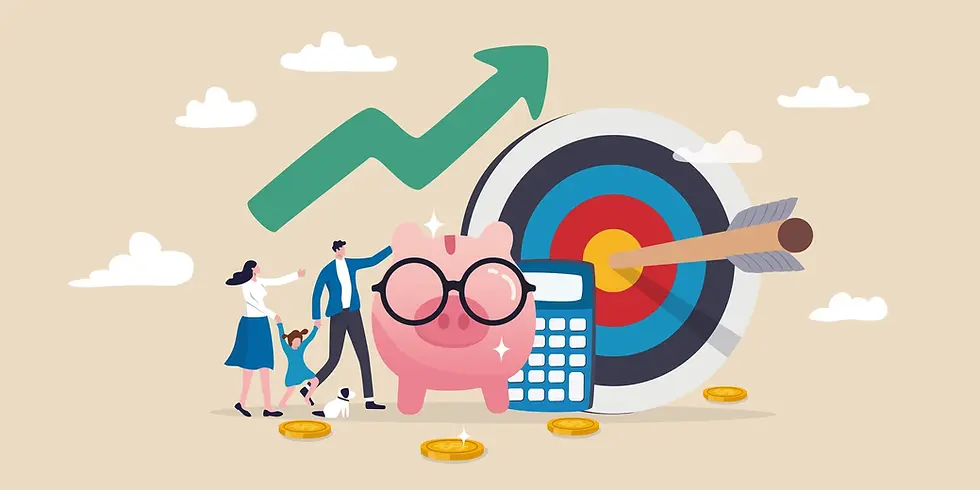Thriving in a Post-Inflation Economy: Personal Finance Tips 2025
- Abhinand PS
.jpg/v1/fill/w_320,h_320/file.jpg)
- Aug 12
- 3 min read
Introduction
As inflation eases yet remains a key economic factor in 2025, managing your personal finances wisely is essential to not just survive but thrive. The post-inflation era demands smart budgeting, strategic investing, and adaptive money habits that can preserve your purchasing power, grow your wealth, and secure your financial future. This guide shares practical, real-world personal finance tips aligned with Google’s 2025 SEO standards, ensuring you get expert advice through a natural, engaging read designed for maximum online visibility.

Understanding the Post-Inflation Economy in 2025
Though inflation rates have stabilized compared to previous years, the lingering effects still influence prices and interest rates. Consumers face slightly increased costs for essentials, while investment landscapes evolve to meet new economic realities. Wise financial decisions today will prepare you for both current challenges and future opportunities.
Key Strategies for Personal Finance Success in 2025
1. Prioritize Smart Budgeting with Adaptive Rules
Adjust your budget using flexible frameworks like the popular 70-20-10 rule — allocating 70% of income to spending, 20% to savings and investments, and 10% to debt repayment or donations. Track expenses diligently using apps such as Mint or YNAB to spot unnecessary spending and reallocate funds to high-priority areas.
2. Build and Maintain a Robust Emergency Fund
Secure at least 3 to 6 months’ worth of essential living expenses in a high-yield savings account. An emergency fund acts as a buffer against unforeseen costs like medical bills, job loss, or sudden repairs, helping you avoid costly debt in turbulent times.
3. Invest to Outpace Inflation
Explore diversified investment options that can help grow your wealth beyond inflation’s reach. Popular choices include index funds, Treasury Inflation-Protected Securities (TIPS), ESG funds, and dividend-paying stocks. Seek guidance from financial advisors to tailor your portfolio to risk tolerance and financial goals.
4. Manage and Reduce High-Interest Debt
Prioritize paying off high-interest liabilities such as credit card balances, which can quickly escalate in a post-inflation environment. Consider strategies like the debt snowball method to stay motivated, reduce debt systematically, and avoid new borrowing unless absolutely necessary.
5. Boost Income Streams and Upskill
Increasing income complements cost-saving efforts. Explore side gigs, freelance opportunities, or monetizing hobbies. Online certifications and courses can open new career paths or promotions, providing greater financial resilience.
6. Embrace Digital Financial Tools for Efficiency
Leverage budgeting apps, investment platforms, credit monitoring services, and cashback programs to optimize money management. Digital tools provide insights and automation to help maintain financial discipline effortlessly.
Key Facts: Personal Finance in a Post-Inflation Economy 2025
Strategy | Description |
Budget Rule | 70% spending, 20% savings/investments, 10% debt/donations |
Emergency Fund | 3-6 months’ essential expenses in high-yield savings |
Investment Options | Index funds, TIPS, ESG funds, dividend stocks |
Debt Management | Prioritize high-interest debt; use debt snowball method |
Income Growth | Side gigs, upskilling through online courses |
Key Tools | Mint, YNAB, Groww, Zerodha, credit monitoring apps |
FAQ — Personal Finance Tips for 2025 Post-Inflation Economy
Q1: How can I adjust my budget for a post-inflation economy?Use flexible budgeting rules like the 70-20-10 rule, track expenses carefully with apps, and shift spending toward essentials while maximizing savings and debt repayment.
Q2: What investments best protect against inflation in 2025?Diversified portfolios with index funds, Treasury Inflation-Protected Securities (TIPS), ESG funds, and dividend stocks help your savings grow beyond inflation rates.
Q3: How much should I keep in my emergency fund?Aim for 3 to 6 months’ worth of essential expenses in an easily accessible, high-yield savings account to cover unexpected financial setbacks.



Comments